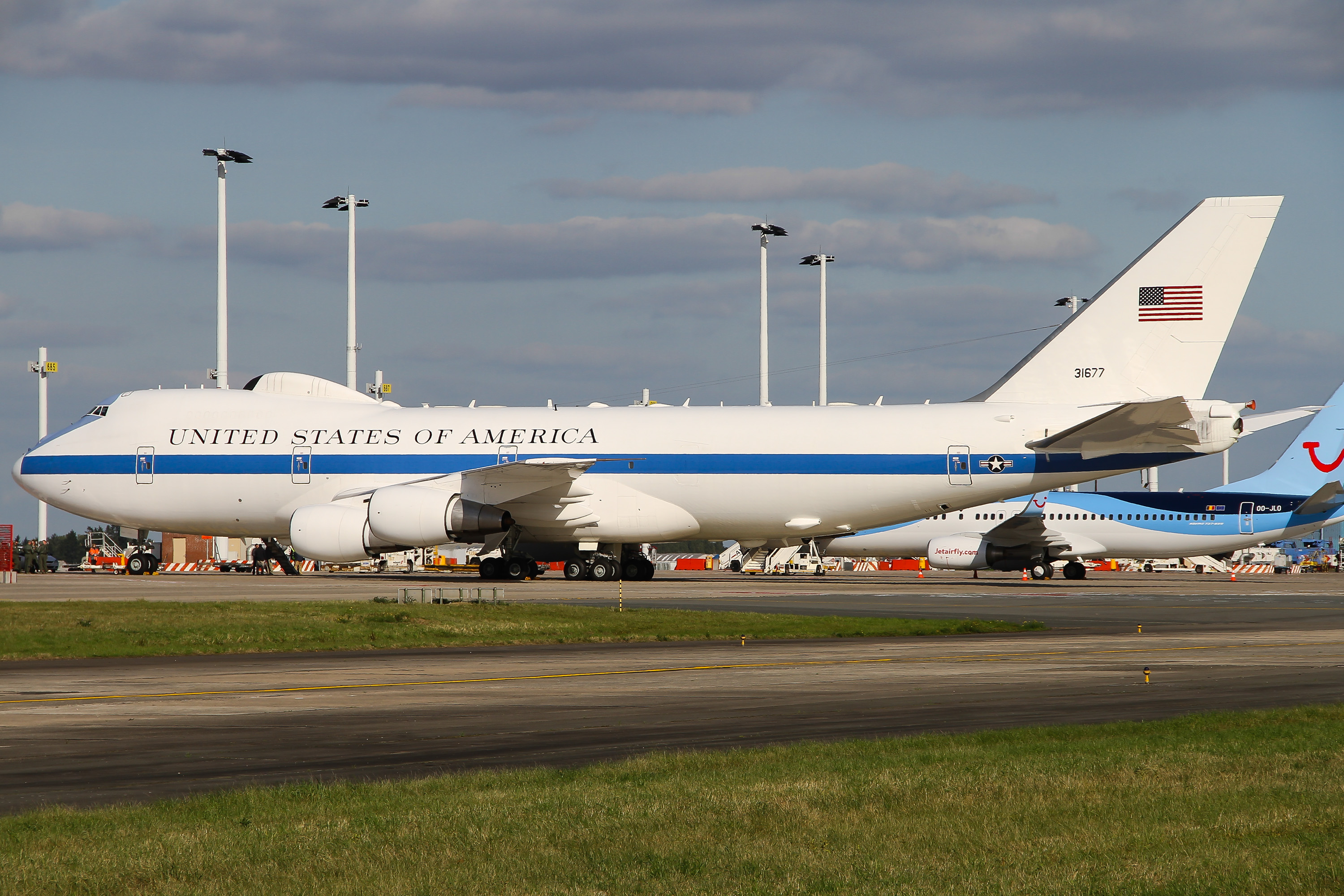America's nuke-resistant 'doomsday plane' spotted doing training mission over Nebraska
The plane was built as a flying command headquarters in the event of nuclear war.

The U.S. Air Force's nuclear-bomb-resistant "doomsday plane" took to the skies for a brief training mission Monday (Feb. 28), shortly after Russian President Vladimir Putin announced he would be putting his country's nuclear forces on high alert, according to news reports.
The doomsday plane — a modified Boeing 747 named the Boeing E-4B — took off from a U.S. Air Force base in Nebraska, then completed a 4.5-hour flight toward Chicago and back before landing again, British news site iNews reported. During this brief sortie, the plane was reportedly accompanied by several early-warning jets used to track ballistic missiles.
The E-4B is part of a fleet of so-called Nightwatch aircraft maintained by the U.S. military since the 1970s. The plane's purpose is to serve as a mobile command headquarters for top military personnel in the event of a nuclear war, Live Science previously reported, and the aircraft contains a few safety features you won't likely see on a commercial 747. For one, the $200 million plane is equipped with antiquated analog equipment, rather than modern digital equipment, to allow the plane to continue operating even when exposed to the electromagnetic pulse from a nuclear blast.
The plane, which is almost totally windowless, is also equipped with special shielding to protect passengers and crew from the thermal effects of a nuclear war. A special bump on top of the plane, known as the "radome," houses more than 65 satellite dishes and antennas, allowing the E-4B to communicate with ships, submarines, aircraft and landlines anywhere in the world, according to CNBC. Many of the plane's other features remain classified.
At least one E-4B is ready at all times, iNews reported, and the fleet conducts regular training and readiness missions.
It's not clear whether Monday's mission was a direct response to Putin's order that Russia's nuclear missile force be placed on "enhanced" combat duty beginning Monday. Putin cited "aggressive" statements from NATO leaders and Western economic sanctions against Russia as the impetus for his military order, according to Reuters.
The U.S. government said on Monday that there would be no change in America's nuclear posture, and President Joe Biden stressed at a news conference that Americans had no reason to fear a nuclear war with Russia, according to iNews.
Get the world’s most fascinating discoveries delivered straight to your inbox.
Originally published on Live Science.

Brandon is the space / physics editor at Live Science. With more than 20 years of editorial experience, his writing has appeared in The Washington Post, Reader's Digest, CBS.com, the Richard Dawkins Foundation website and other outlets. He holds a bachelor's degree in creative writing from the University of Arizona, with minors in journalism and media arts. His interests include black holes, asteroids and comets, and the search for extraterrestrial life.


